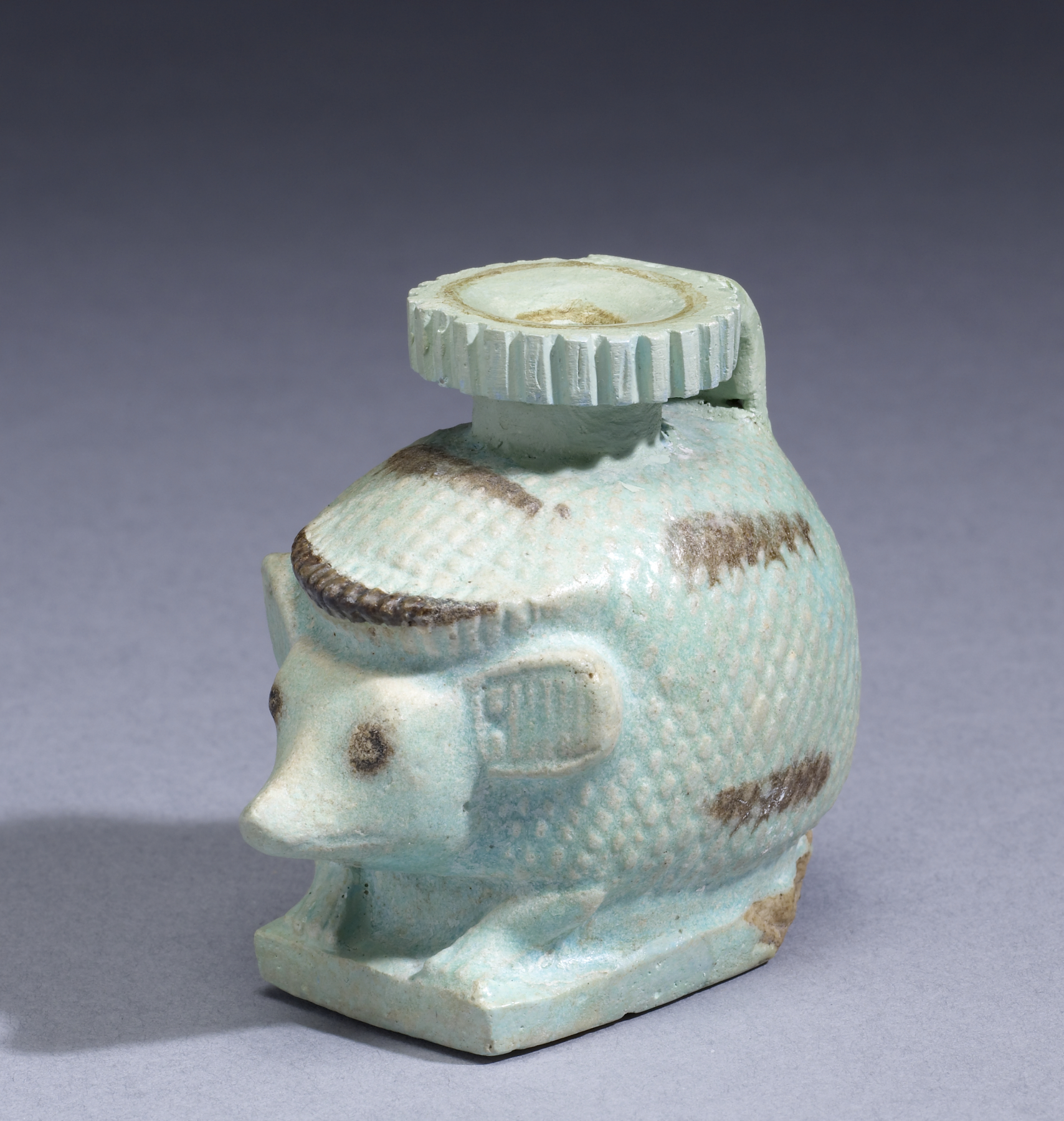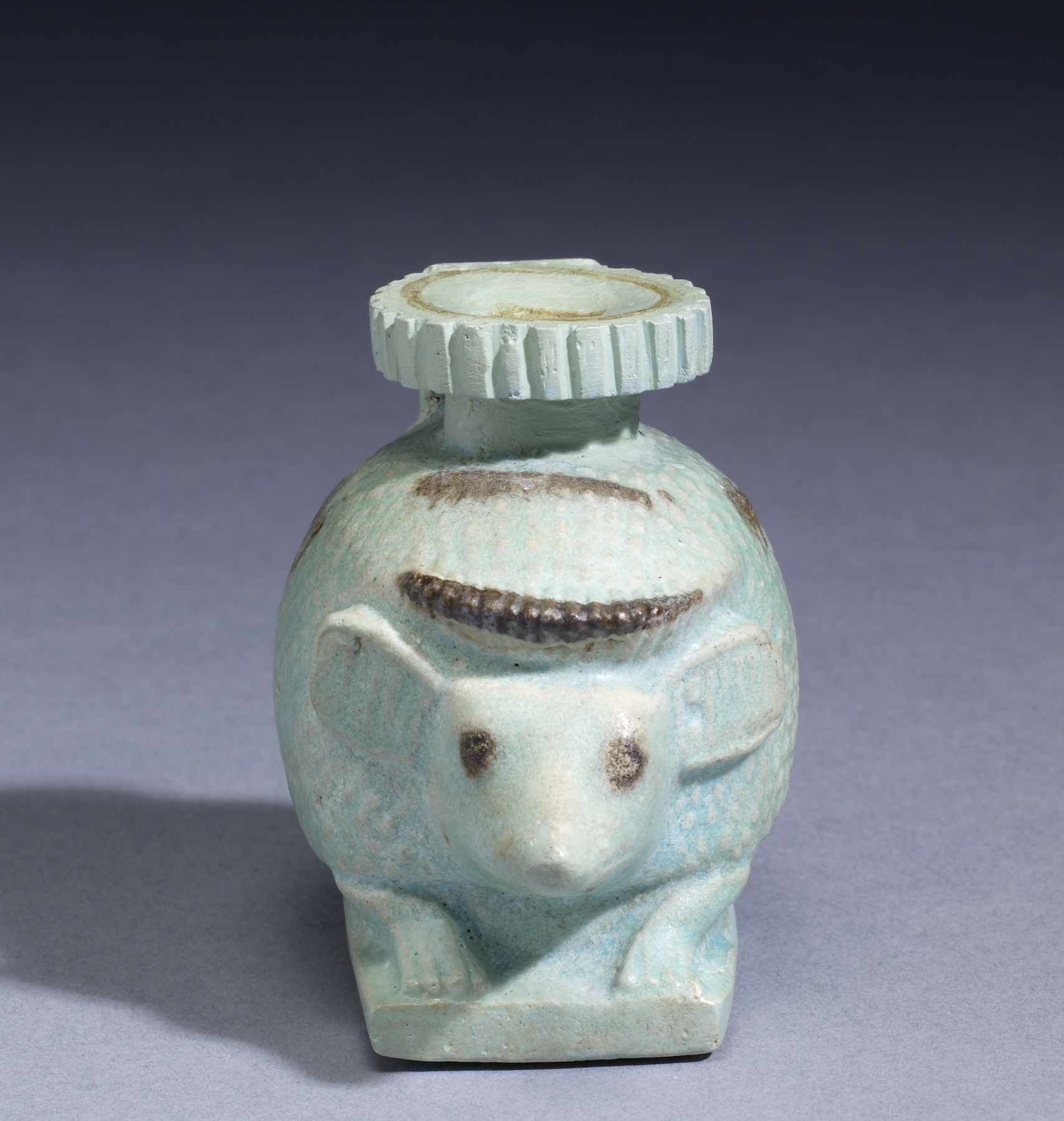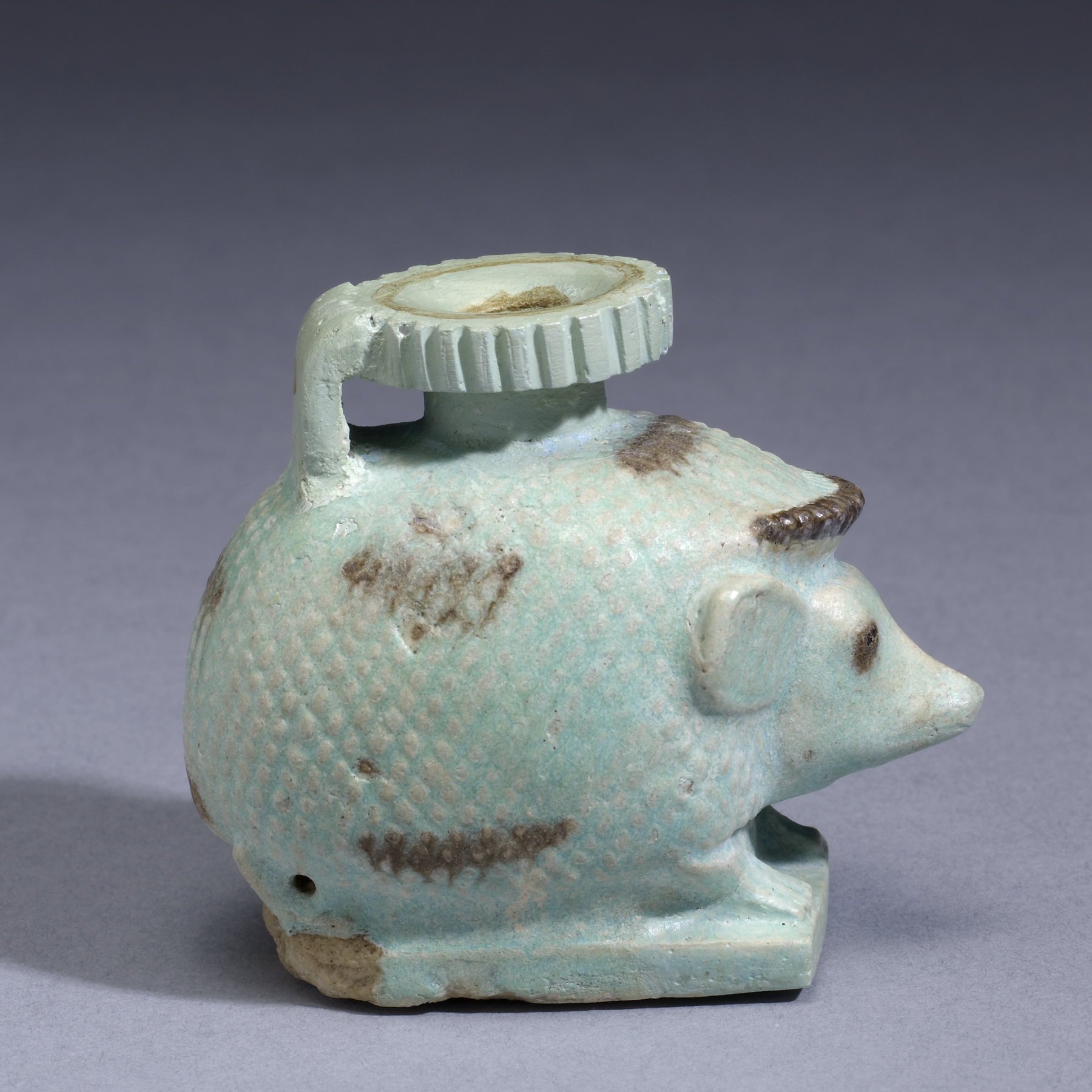Aryballos in the Form of a Hedgehog
The cosmetic vessel consists of a hedgehog shaped body on a small rectangular plinth, a neck with large lip, and a handle on top of the animal's back. The prickly body of this hedgehog is shown by a cross-hatched pattern. The eyes and the markings on the body have been added in a brownish-black glaze. The head has a long extended snout, slightly protruding eyes, as well as large ears that set up attentively, and with vertical line hatching. The protruding fringe above the forehead is also accentuated with black color.
Perfume of cosmetic containers in the shape of a hedgehogs became common during the 6th and 5th century BCE, and were probably invented in the Greek colony of Naukratis and the Western Delta region of Egypt. However, hedgehog representation on ships, and hedgehog statuettes were common in ancient Egypt from the 3rd millennium BCE. His body armor symbolized protection, and in addition he was seen as one of the sun gods special animals.
Provenance
Provenance (from the French provenir, 'to come from/forth') is the chronology of the ownership, custody, or location of a historical object. Learn more about provenance at the Walters.
Parvin Collection, Alan Krammer, Chicago [date and mode of acquisition unknown] [the collection was formed in the 1960s-70s, and disbanded in the early 1980s]; Dr. John Winnie Collection, St. Mary's, Georgia, 1990s [mode of acquisition unknown]; Mele Gallery, Westport, Connecticut, 2007, by purchase; Walters Art Museum, 2009, by purchase.
Geographies
Egypt (Place of Origin)
Measurements
2 7/16 x 2 15/16 x 1 7/8 in. (6.2 x 7.5 x 4.8 cm)
Credit Line
Museum purchase, 2009
Location in Museum
Accession Number
In libraries, galleries, museums, and archives, an accession number is a unique identifier assigned to each object in the collection.
In libraries, galleries, museums, and archives, an accession number is a unique identifier assigned to each object in the collection.
48.2863






